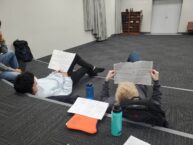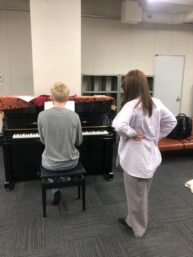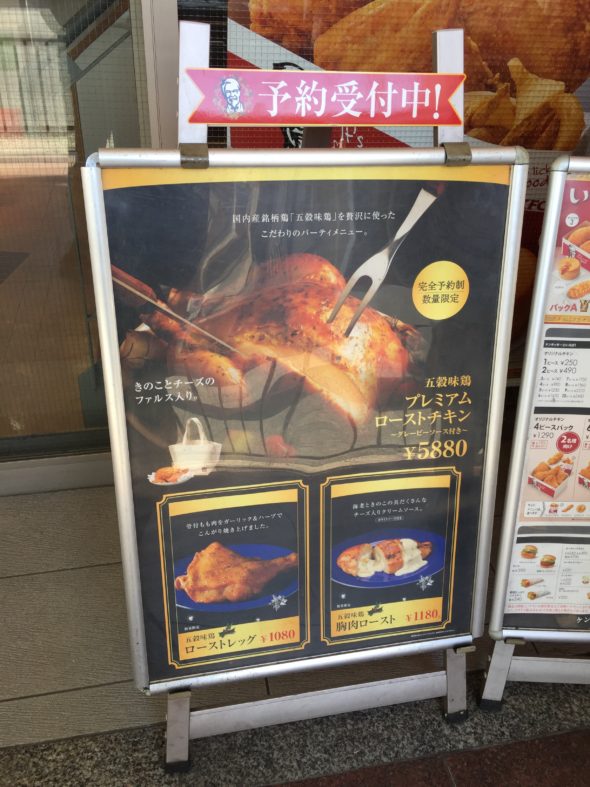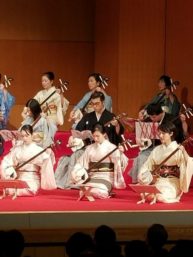For my CIP, I played go. Go is a game that is chesslike in strategy, simpler in rules, and much more complex in planning. It is played between two players labeled as black and white, on a 19 by 19 board. The board begins empty and slowly fills up as players take turns placing small, circular stones on the empty intersections in a bid to surround as much territory (empty intersections) as possible. Because of the sheer number of ways to play and moves that can be made at any given point, the strategy and long-term planning far exceeds chess in potential strategy, while simultaneously staying much more simple in ruleset.
The place I played go was a place called the Kyoto Go Salon, a small little place on a side street off of Shijo (a main street running through downtown Kyoto). At first I started playing on a small 9×9 board against other beginners, and as I got better I managed to get used to first the 13×13 boards and then eventually the full size 19×19 boards. The salon is closed on Fridays, but is open from 1PM-6PM every other day of the week, Saturday through Thursday. I would go every Wednesday as soon as I could, as well as the occasional Sunday or Monday afternoon, and play a few games. A full-length game on a full-size board will take about an hour to complete, so with perfect efficiency, you might be able to play five games in an afternoon, although if you’re not used to it, your brain might be fried by the time you play three.
The main difference between this salon and other go salons in Kyoto, is that it prides itself on how accessible it is for beginners, and I could feel it. At the start, I was a complete beginner, who only knew the general rules of the game, but my growth has been explosive due to the manner in which sensei teaches. Sensei is extremely animated and excited about go, and that emotion bled over to me: whenever he would explain something, like why one move is generally preferred over another, or when replaying a moment of a game where he saw a mistake, he’d have the biggest grin on his face, and he was potentially the single most expressive person I’ve met in Japan. At first, the most important thing with Sensei’s lessons was asking questions about words’ definitions. I couldn’t understand the vocabulary of the Kansai dialect very well, let alone the faster-than-Tokyo-dialect speed and the increased use of tone and pitch. For a good two weeks, I didn’t have any idea what Sensei was saying, but I slowly managed to get the hang of it. Even now, comprehension isn’t perfect and I ask questions about meaning, but I can follow a conversation now.
Sensei is also a big fan of getting stronger through experience; he is more likely to let you play out a game by making a mistake and then seeing where you went wrong than he is to give advice on a move that you should make in the future, although if you continuously make the same mistake, he will give you advice. A lot of his instruction is like that; the only general teaching he does is at the start of the afternoon, right at 1:00, by doing just a few tsumego (practice problems) on a large magnetic front-facing board before allowing everyone to play against others of the same skill level.
Something that surprised me a bit was that at the end of the games, when it came time to count territory, it wasn’t just a matter of counting, but the MANNER in which you count. You have to arrange it in a specific way, and even if it’s harder for you to count it like that, if it’s not the “correct” way, then you’re doing it wrong. It was frustrating, but it reminded me of the oft-said idea regarding Japan that it’s not a matter of “best” way of counting, but rather “what’s been decided.”
The other players were, with a single exception, all over 50 years old, with the grand majority being at least in their mid-60s. The patrons of the salon were very friendly, and I enjoyed talking to them—there was a some general talk of the weather, recent travels, current events, and family, but most of it was related to go itself, and the games that we just played or were about to play. The way that the patrons talked with me was similar to each other: in rapid Kansai dialect. With no shortage of politeness, but also not as formal as Tokyo Dialect’s standard desu-masu form. At one point, on Valentine’s Day, one of my fellow kishi 棋士 (go and/or shogi players) brought in chocolates for everyone and introduced me to the idea of girichoko, or “obligation chocolate,” which in turn led me to learn more about how Valentine’s Day (and White Day) are handled in Japan—it’s very different than the U.S.!
The only exception was with the one young player, a young man named Inata-san. And Inata-san was more of a stone than the black and white stones we put on the goban. He didn’t react to Sensei’s positive and goofy energy in the slightest, and even when I tried to make conversation, he gave me one-word answers with no emotion. I had heard of the famous “Japanese reservedness/shyness” before, but this was my first time experiencing it firsthand. Maybe I only saw it once because Inata-san was a young adult and not an older fellow? It definitely seemed like there was a correlation between higher age and openness to conversation, so maybe this was the logical extreme, with “much younger” being “much more reserved”?
The salon was just a great experience for me, and I loved it immensely. I would recommend this place to anyone who doesn’t have much experience (or even any experience at all) but still has any interest at all in not just go, but in chesslike games as a whole.
http://www.eonet.ne.jp/~kyotoigosa/
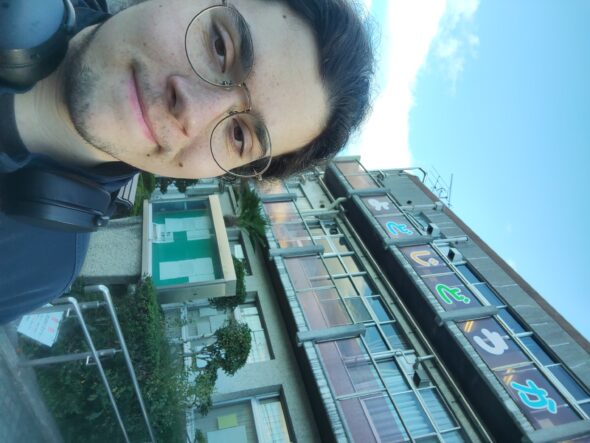

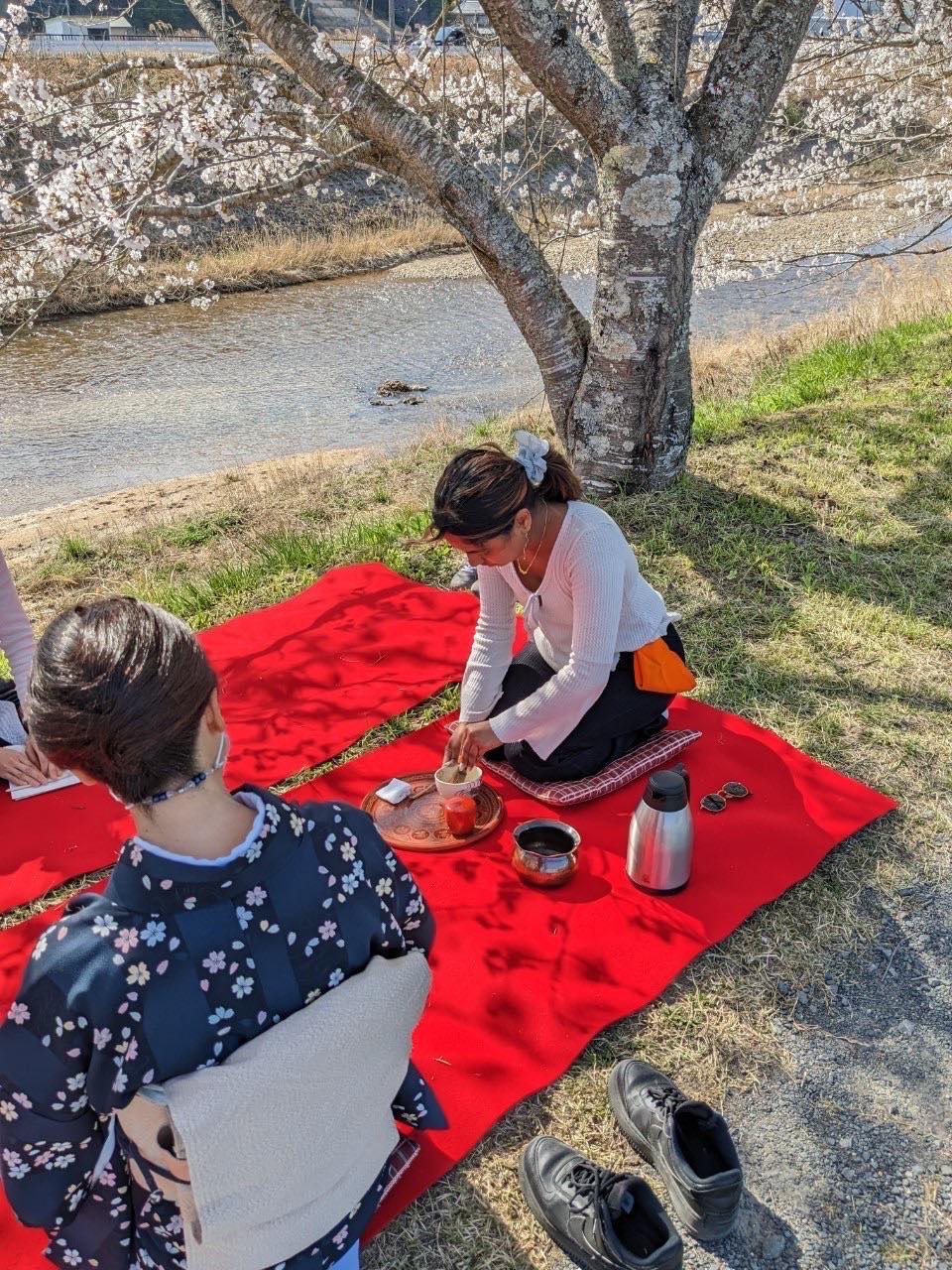 For my CIP I took tea ceremony, or sadou, lessons with Fujimura Sensei. The KCJS office introduced us to Fujimura Sensei and it seems like KCJS has a long relationship with her. While normally the study of sadou takes decades and is a very lengthy process, since we only had one semester Fujimura sensei customized the lessons for us so that we were able to end by being able to perform the tea ceremonies, or the obon-temae. The tea room is a little out of the way in Takagamine, but the environment is absolutely stunning and so the commute is worth it. The tea room is situated right over a river in a silent forest, so you can hear the sound of the water while in the tea room. Sensei is an extremely elegant woman who is also one of the most precious and sweetest people I have ever met. She even made a bento for us on two occasions, for the Doll Festival and cherry blossom viewing, and of course we got to enjoy the most exquisite wagashi, or seasonal Japanese confectionary every class. The thing that was the most meaningful for me was that in every lesson sensei would also make a point to talk about how to use the philosophy that sadou teaches us and incorporate it into our busy, stressful everyday lives.
For my CIP I took tea ceremony, or sadou, lessons with Fujimura Sensei. The KCJS office introduced us to Fujimura Sensei and it seems like KCJS has a long relationship with her. While normally the study of sadou takes decades and is a very lengthy process, since we only had one semester Fujimura sensei customized the lessons for us so that we were able to end by being able to perform the tea ceremonies, or the obon-temae. The tea room is a little out of the way in Takagamine, but the environment is absolutely stunning and so the commute is worth it. The tea room is situated right over a river in a silent forest, so you can hear the sound of the water while in the tea room. Sensei is an extremely elegant woman who is also one of the most precious and sweetest people I have ever met. She even made a bento for us on two occasions, for the Doll Festival and cherry blossom viewing, and of course we got to enjoy the most exquisite wagashi, or seasonal Japanese confectionary every class. The thing that was the most meaningful for me was that in every lesson sensei would also make a point to talk about how to use the philosophy that sadou teaches us and incorporate it into our busy, stressful everyday lives.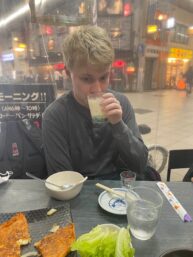
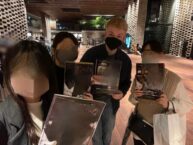
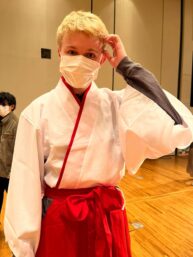 erywhere, with some minor differences. What was
erywhere, with some minor differences. What was 